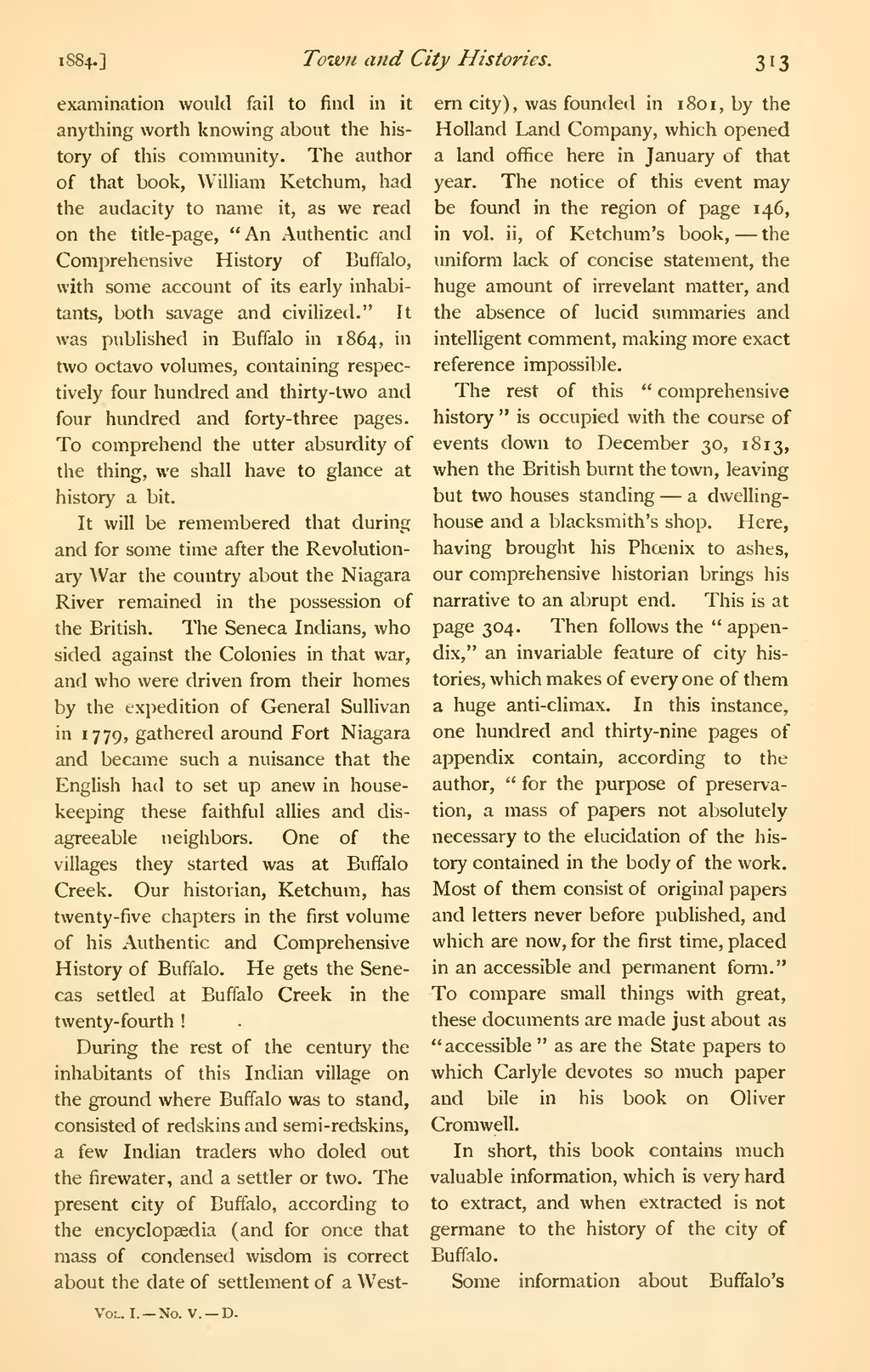ISS4.]
��Toivu and City Histories.
��313
��examination would foil to find in it anything worth knowing about the his- tory of this community. The author of that book, William Ketchum, had the audacity to name it, as we read on the title-page, "An Authentic and Comprehensive History of Buffalo, with some account of its early inhabi- tants, both savage and civilized." It was published in Buffalo in 1864, in two octavo volumes, containing respec- tively four hundred and thirty-two and four hundred and forty-three pages. To comprehend the utter absurdity of the thing, we shall have to glance at history a bit.
It will be remembered that during and for some time after the Revolution- ary AVar the country about the Niagara River remained in the possession of the British. The Seneca Indians, who sided against the Colonies in that war, and who were driven from their homes by the expedition of General Sullivan in 1779, gathered around Fort Niagara and became such a nuisance that the English had to set up anew in house- keeping these faithful alUes and dis- agreeable neighbors. One of the villages they started was at Buffalo Creek. Our historian, Ketchum, has twenty-five chapters in the first volume of his Authentic and Comprehensive History of Buffalo. He gets the Sene- cas settled at Buffalo Creek in the twenty- fourth !
During the rest of the century the inhabitants of this Indian village on the ground where Buffalo was to stand, consisted of redskins and semi-redskins, a few Indian traders who doled out the firewater, and a settler or two. The present city of Buffalo, according to the encyclopaedia (and for once that mass of condensed wisdom is correct about the date of settlement of a West-
��ern city), was founded in 1 801, by the Holland Land Company, which opened a land office here in January of that year. The notice of this event may be found in the region of page 146, in vol. ii, of Ketchum's book, — the uniform lack of concise statement, the huge amount of irrevelant matter, and the absence of lucid summaries and intelligent comment, making more exact reference impossible.
The rest of this " comprehensive history " is occupied with the course of events down to December 30, 1813, when the British burnt the town, leaving but two houses standing — a dwelling- house and a blacksmith's shop. Here, having brought his Phoenix to ashes, our comprehensive historian brings his narrative to an abrupt end. This is at page 304. Then follows the " appen- dix," an invariable feature of city his- tories, which makes of every one of them a huge anti-climax. In this instance, one hundred and thirty-nine pages of appendix contain, according to the author, " for the purpose of preserva- tion, a mass of papers not absolutely necessary to the elucidation of the liis- tory contained in the body of the work. Most of them consist of original papers and letters never before published, and which are now, for the first time, placed in an accessible and permanent form." To compare small things with great, these documents are made just about as "accessible " as are the State papers to which Carlyle devotes so much paper and bile in his book on Oliver Cromwell.
In short, this book contains much valuable information, which is very hard to extract, and when extracted is not germane to the history of the city of Buffalo.
Some information about Buffalo's
��Vol.. I. — No. v. — D.
�� �
